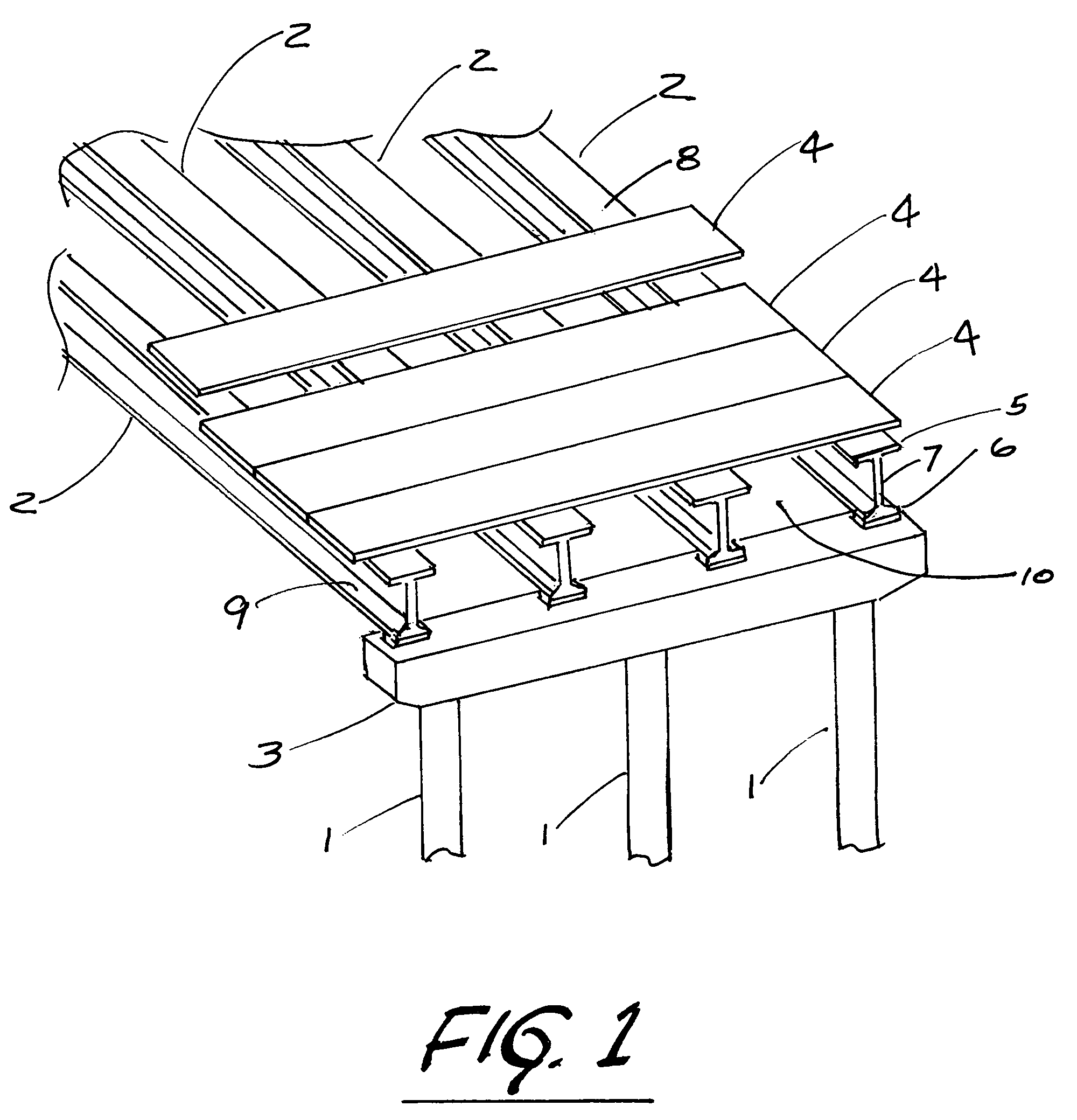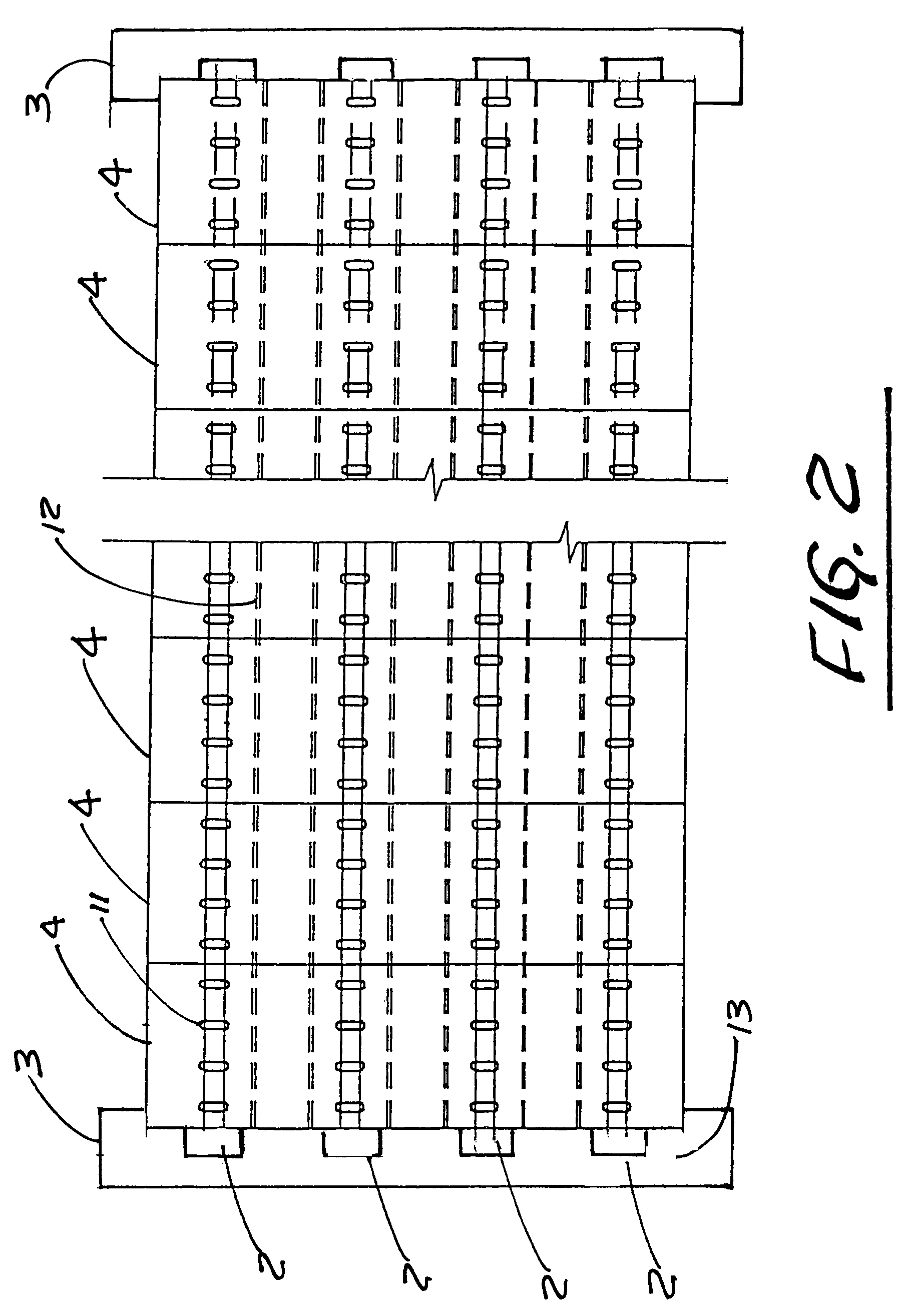Bridge construction system and method
a construction system and bridge technology, applied in bridge construction, bridge materials, construction, etc., can solve the problems of system time, limited access to work site, so as to achieve cost efficiency and facilitate construction.
- Summary
- Abstract
- Description
- Claims
- Application Information
AI Technical Summary
Benefits of technology
Problems solved by technology
Method used
Image
Examples
Embodiment Construction
[0048]A typical concrete bridge construction is shown in FIG. 1, where the support pilings 1 are spaced in accordance with the designed span capability of the bridge girders 2 which are supported at the end of each span by a bent cap 3 resting on the support pilings 1. In the depicted embodiment the bridge girders 2 are pre-cast pre-stressed concrete. Although for many years the design of pre-cast pre-stressed concrete girders was based on compressive strengths of 5,000 to 6,000 psi, strengths up to 10,000 psi and above are now possible, giving rise to the term “high-performance concrete” (HPC). However, it is not intended that the present invention be limited to bridge construction using pre-cast pre-stressed concrete girders. A typical alternative would be a built-up steel plate girder.
[0049]As shown in FIG. 1, the bridge girders 2 have a typical cross section with an upper flange 5 and lower flange 6 connected by a vertical web 7. The upper flange 5 has an upper surface 8 which s...
PUM
 Login to View More
Login to View More Abstract
Description
Claims
Application Information
 Login to View More
Login to View More - R&D
- Intellectual Property
- Life Sciences
- Materials
- Tech Scout
- Unparalleled Data Quality
- Higher Quality Content
- 60% Fewer Hallucinations
Browse by: Latest US Patents, China's latest patents, Technical Efficacy Thesaurus, Application Domain, Technology Topic, Popular Technical Reports.
© 2025 PatSnap. All rights reserved.Legal|Privacy policy|Modern Slavery Act Transparency Statement|Sitemap|About US| Contact US: help@patsnap.com



